Michelle Nevius's Blog, page 7
July 27, 2017
Postcard Thursday: A Pic-Nic in Brooklyn

James was (virtually) thumbing through old copies of The Brooklyn Daily Eagle recently researching a story and realized he was reading papers that were issued in July 1867, a century-and-a-half ago. Too often, history is reduced to big events and the exploits of exceptional individuals, so it can be very refreshing just to peruse a daily paper to see what was newsworthy on an average day.
The above correction from the Eagle from July 27, 1867 -- 150 years ago today -- is typical. Having reported on the Good Will Engine Company picnic (or "pic-nic") the day before, the editors felt the need to rectify the fact that Mr. R. Cowen's lager, soda water, and sarsaparilla had been left out of the original reportage. Egads! Notice, however, that while Cowen is singled out along with Messrs Pearce, Carroll, Goodrich, and Burns, the ice cream department's ladies don't get names.
Ah, well, at least they get a "God bless them."
You can read copies of the Eagle and other Brooklyn papers at https://bklyn.newspapers.com/
Read more about NYC history in
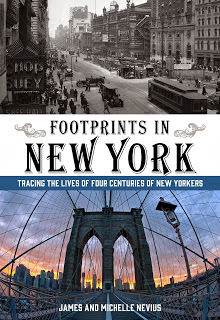
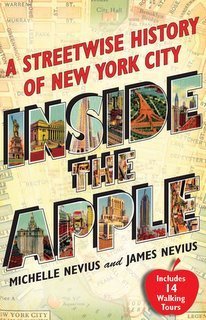
Footprints in New York: Tracing the Lives of Four Centuries of New Yorkers
Inside the Apple: A Streetwise History of New York City
Published on July 27, 2017 10:16
July 20, 2017
Postcard Thursday: Apollo XI
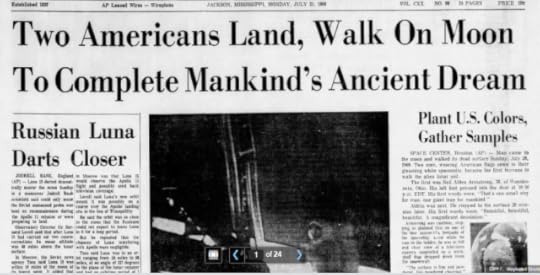
On July 20, 1969, the Apollo XI capsule landed on the moon and humans walked on a celestial body for the first time.
A few days later, the Apollo astronauts--back on terra firma--were feted in New York with a major ticker tape parade. At the time, many claimed it was the largest ticker tape parade New York had ever seen, but as we were researching Inside the Apple , we found that same claim was made for many parades and it’s almost impossible to verify. (Four million people were said to have attended the Apollo parade—an impressive number, even if it’s not the largest.)
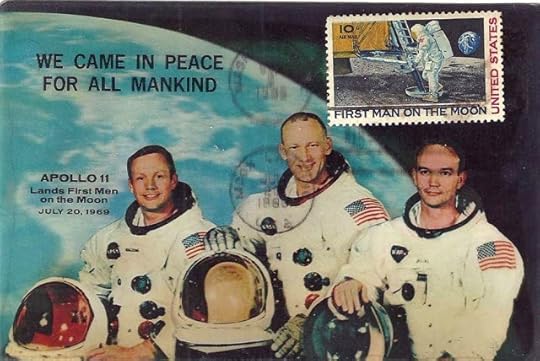
Certainly, it was the longest parade. The city’s traditional parade route runs from Bowling Green Park at the foot of Broadway to City Hall. The Apollo astronauts, however, after receiving the key to the city, continued up Broadway to Herald Square and then on to Times Square. As the New York Times noted, the confetti in Midtown was “made up more of paper towels and pages from telephone directories than tickertape” and that it grew “so dense that the astronauts could hardly see.”
As we write in Inside the Apple:
It was also one of the fastest ticker tape parades. The astronauts started at Bowling Green at 10:17 a.m. (about half an hour ahead of schedule) and arrived on the steps of City Hall just fourteen minutes later! Many people who showed up for the parade were disappointed to discover that the astronauts had already passed them by…. By 1:15 p.m. the astronauts were back at Kennedy airport to go to Chicago. They ended the day with festivities in Los Angeles. Having just been to the moon and back, a quick one-day jaunt across North America must not have seemed like such a big deal.
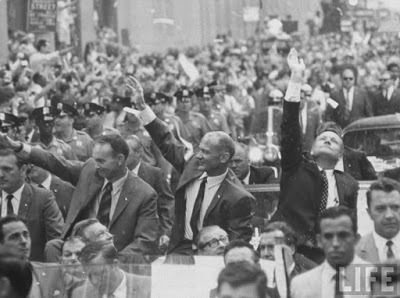
The astronauts had to go through customs upon their return--follow this link to see the astronauts declaration form ("Departure from: MOON. Arrival at: Honolulu, Hawaii, USA").
Read more about NYC history in


Footprints in New York: Tracing the Lives of Four Centuries of New Yorkers
Inside the Apple: A Streetwise History of New York City
Published on July 20, 2017 11:19
July 13, 2017
Postcard Thursday: The NYC Draft Riots
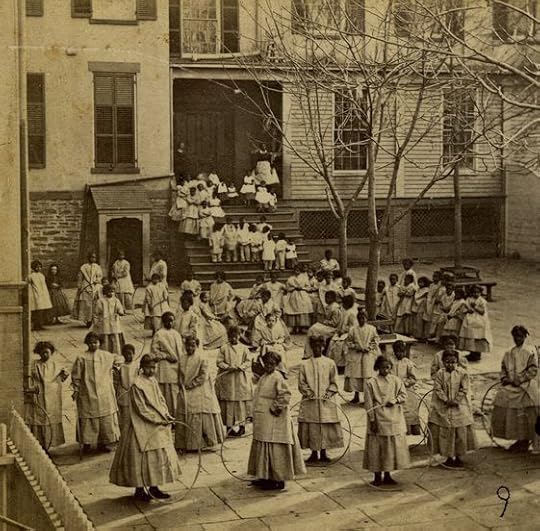 Children play in front of the Colored Orphans Asylum, which was burned down during the riots
Children play in front of the Colored Orphans Asylum, which was burned down during the riotsOn July 13, 1863, the deadly New York City draft riots began with an attack on the Ninth District Office.
As we write in Footprints in New York :
July 1863 was hot—so hot that the New York Times warned of the “close and uncomfortable weather.” Still, the rising temperatures did not stop a crowd of at least 150 people assembling inside the Ninth District draft office on Third Avenue and 46th Street on the morning of Saturday, July 11, 1863. Some were merely spectators, there to watch the show. Others had a personal stake in what was about to happen: the first large-scale military draft in America’s history.
On stage, a two-foot-high wooden drum stood front and center. To ensure impartiality, the clerk charged with selecting the names was blind- folded. After the names were mixed, the clerk put in his hand and extracted the first cylinder of paper. He handed it to Provost Marshal Charles Jenkins, who read out: “William Jones, Forty-Sixth Street corner of Tenth Avenue.”
The crowd broke out into nervous chattering and bad jokes. “Poor Jones!” someone cried.
“Good for Jones!” said someone else.
As the day wore on, the process turned monotonous, though observers tried to remain “jocular” (in the words of the New York Herald). By four o’clock in the afternoon, about twelve hundred names had been pulled— nearly half of the district’s quota. The office would be closed on Sunday, but the draft was set to resume on Monday morning at 9:00 a.m.
I wonder when word finally reached William Jones that he had the dubious honor of being the first name picked. Was he with the crowd that showed up that Monday morning—their jocularity long since replaced with fury?
As soon as the draft resumed Monday, it was chaos. First, the crowd shattered the windows; then they torched the Ninth District draft office. The insurrection that began that morning, known now as the New York City Draft Riots, lasted four days—still, a century-and-a-half later, the deadliest civil disturbance in American history. Hundreds were killed and perhaps as many as ten thousand injured. The fact that this is nothing compared to the carnage of the war itself—almost eight thousand people had been slaughtered over two days at Gettysburg just ten days earlier—does not diminish the size of these riots. If anything, it shows how bloody and awful the Civil War had become. It was a conflict, from the beginning, in which New York didn’t even want to take part.
A few years ago, we chronicled the Draft Riots day-by-day. You can read the whole series here .
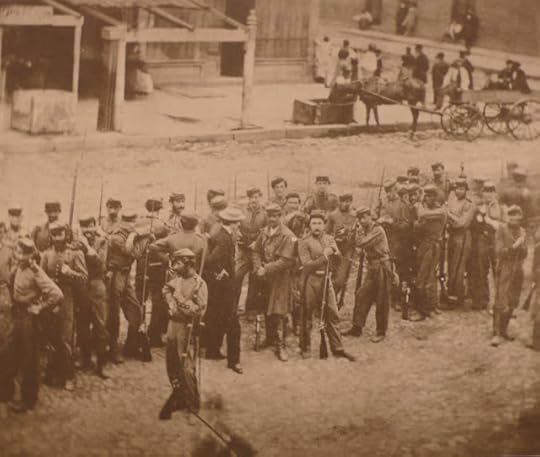 New York's Seventh Regiment, recalled from the Battle of Gettysburg, helped quell the riots
New York's Seventh Regiment, recalled from the Battle of Gettysburg, helped quell the riotsRead more about NYC history in


Footprints in New York: Tracing the Lives of Four Centuries of New Yorkers
Inside the Apple: A Streetwise History of New York City
Published on July 13, 2017 09:04
July 6, 2017
Postcard Thursday: Independence Day Postcards
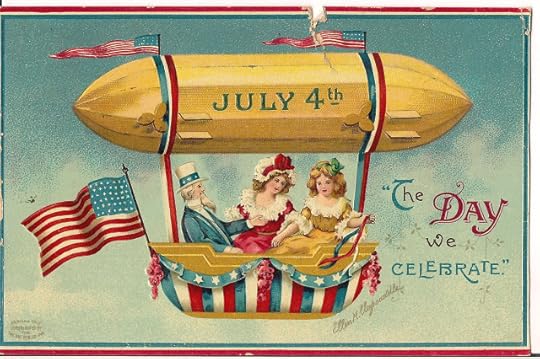
As long-time readers of the blog know, we are only a portion of the way through "Independence Week," so, technically, this post isn't late!
Hope you had a great holiday. Today's post features some actual turn-of-the-20th-century postcards, which were a popular way to share your Independence Day sentiments with friends and family. A number of these postcards are cautionary tales:
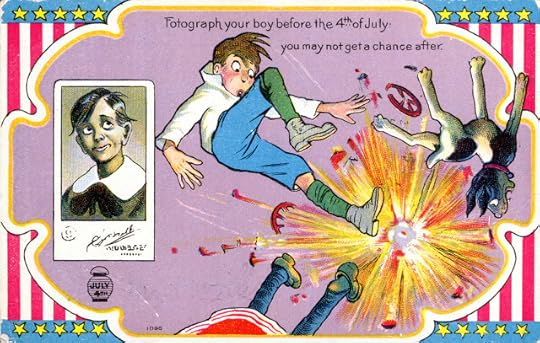
Many pay tribute to the Union Army (or GAR: Grand Army of the Republic), a reminder that every July 4th after 1865 became not just a celebration of the Declaration of Independence, but of the hard-fought war to keep the country intact.
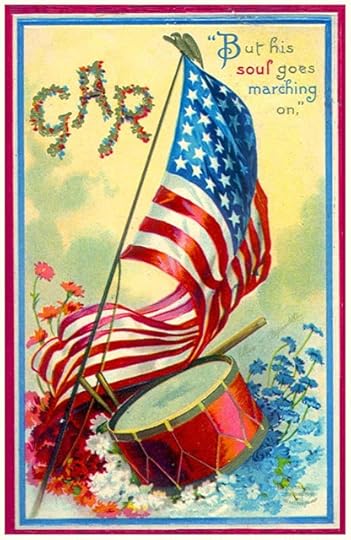
Read more about NYC history in


Footprints in New York: Tracing the Lives of Four Centuries of New Yorkers
Inside the Apple: A Streetwise History of New York City
Published on July 06, 2017 09:39
June 29, 2017
Postcard Thursday: Little House on the Prairie
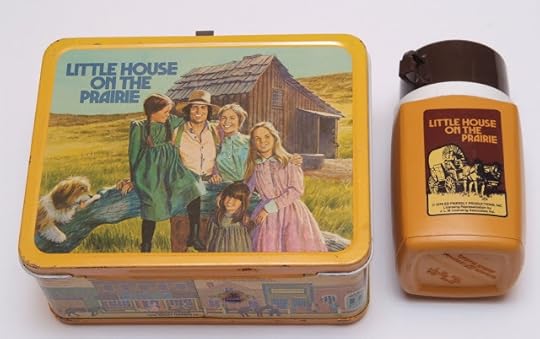
Do you remember these? You can visit this lunch box -- and lots of other Little House on the Prairie memorabilia from the books and TV shows -- at the various Laura Ingalls Wilder museums scattered across the Midwest. In honor of Wilder's 150th birthday, we drove the route the Ingalls family took in their travels for a story James was working on for The New York Post. You can read it here: http://nypost.com/2017/06/26/150-years-after-laura-ingalls-birth-explore-the-midwest-little-house-on-the-prairie-style/.
Thanks also to the big crowd that turned out for the Bowery walk last Sunday. Keep your eyes peeled for our next public tour in the fall.
Read more about NYC history in


Footprints in New York: Tracing the Lives of Four Centuries of New Yorkers
Inside the Apple: A Streetwise History of New York City
Published on June 29, 2017 09:34
June 22, 2017
Postcard Thursday: Frank Lloyd at MoMA
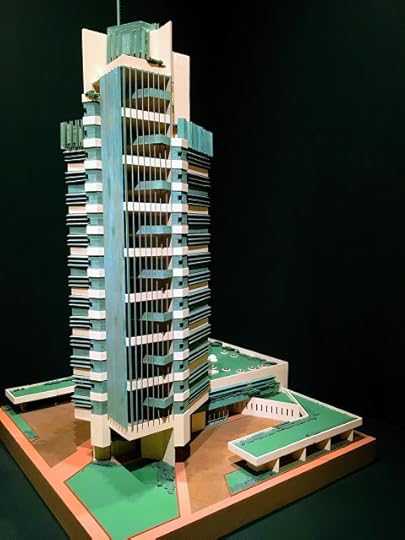 Model of the Price Tower in Barteslville, OK
Model of the Price Tower in Barteslville, OKIf you haven't yet had the chance, we highly recommend heading over to the Museum of Modern Art to see "Frank Lloyd Wright at 150: Unpacking the Archive," a wonderful collection of architectural drawings, renderings, and models. The show, curated by Columbia University's Barry Bergdoll, spans Wright's career from early work in and around Oak Park, Illinois, to his final, unrealized plans for a mile-high skyscraper. Many of the works on display are for commissions that were never brought to fruition -- and some, like that skyscraper, weren't even commissions -- and it's a rare treat to see these lesser-known ideas.
The exhibition runs through October 1, 2017. As preparation, you might want to check out some of James's recent work on Wright:
Is the World Ready for Frank Lloyd Wright's Suburban Utopia? Roadtripping Frank Lloyd Wright Becoming Frank Lloyd Wright
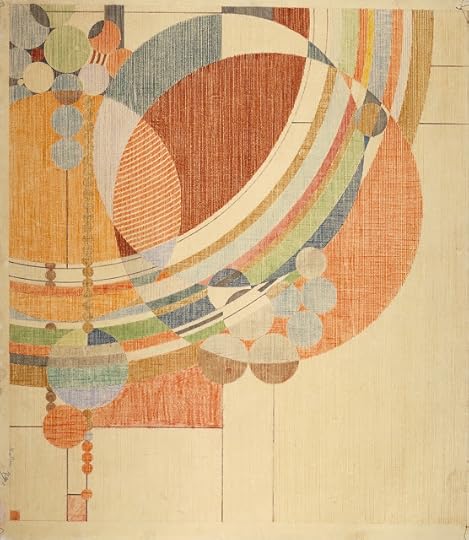
Frank Lloyd Wright. March Balloons. 1955. Drawing based on a c. 1926 design for Liberty magazine. Colored pencil on paper, 28 1/4 x 24 1/2" (71.8 x 62.2 cm). The Frank Lloyd Wright Foundation Archives (The Museum of Modern Art | Avery Architectural & Fine Arts Library, Columbia University, New York)
Read more about NYC history in


Footprints in New York: Tracing the Lives of Four Centuries of New Yorkers
Inside the Apple: A Streetwise History of New York City
Published on June 22, 2017 13:55
June 15, 2017
Postcard Thursday; Last Chance for the Bowery
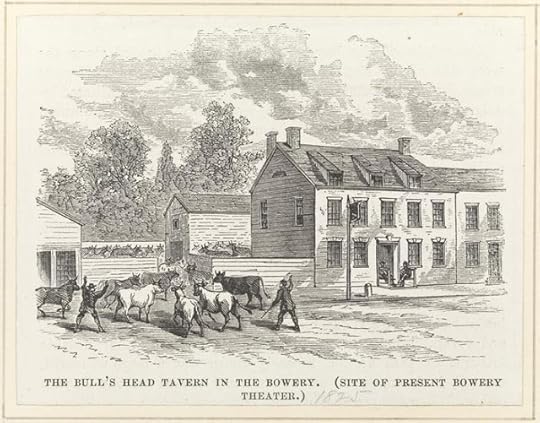
Reservations are going fast..... While the "early bird" deadline for signing up for our Sunday, June 25, tour of the Bowery is technically June 21, there are only a few spots left, so if you are planning to attend, do reserve at your earliest convenience. Full details below.
* * * * THE HISTORY OF THE BOWERY WALKING TOURSunday, June 25 | 11am - 1pm
Join award-winning journalist, author, and guide James Nevius for a walk up New York City's oldest street.From country road to immigrant entertainment district to Skid Row (and beyond), the Bowery has witnessed New York's rich history. Together, we will explore 400+ years of New York's story along this famous thoroughfare.
The tour is $20 per person for those who reserve before Tuesday, June 21 (when the price goes up to $25 per person).
To reserve, email walknyc@gmail.com withYour nameThe number in your partyAnd a cell phone where we can contact you the morning of the tour if there's any problemsExact details of where to meet will be emailed to you within 24 hours of receiving your reservation.
Published on June 15, 2017 08:03
June 8, 2017
Postcard Thursday: Frank Lloyd Wright
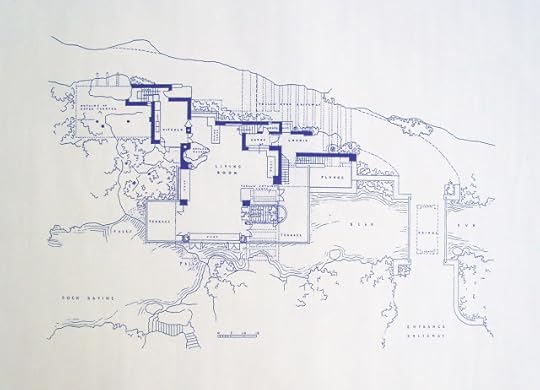 The blueprints for Fallingwater, often called Frank Lloyd Wright's masterpieceToday, June 8, marks the 150th birthday of Frank Lloyd Wright, who is considered by many to be America's most significant architect.
The blueprints for Fallingwater, often called Frank Lloyd Wright's masterpieceToday, June 8, marks the 150th birthday of Frank Lloyd Wright, who is considered by many to be America's most significant architect.In his honor, Curbed has devoted a series of articles to Wright's work and legacy, and James wrote the one that looks at his early work in and around Chicago. Titled "Becoming Frank Lloyd Wright," the piece argues that even before the advent of the Prairie Style, Wright was incorporating architectural elements that he would revisit throughout his career.
You can read the story here: https://www.curbed.com/2017/6/8/15749604/prairie-school-chicago-early-frank-lloyd-wright
And check out the rest of Curbed's #FLW150 celebration at https://www.curbed.com/2017/6/8/15729452/frank-lloyd-wright-guide-legacy
* * * *In other news.... reservations are now open!
On Sunday, June 25, at 11:00 am, we will be conducting a walking tour of The History of the Bowery.
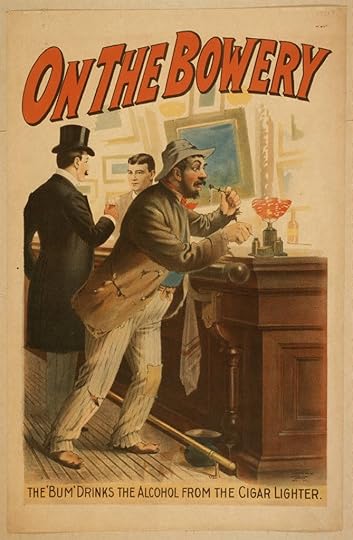
From country road to immigrant entertainment district to Skid Row (and beyond), the Bowery has witnessed New York's rich history. Together, we will explore 400+ years of New York's story along this famous thoroughfare.
The tour is $20 per person for those who reserve before Tuesday, June 21 (when the price goes up to $25 per person).
To reserve, send an email to walknyc@gmail.com with
Your nameThe number in your partyAnd a cell phone where we can contact you the morning of the tour if there's any problems
Details of where to meet will be emailed to you within 24 hours of receiving your reservation.
This walk may sell out, and reservations are being taken on a first-come, first-served basis, so RSVP soon!
Published on June 08, 2017 08:59
June 1, 2017
Postcard Thursday: It was 50 Years Ago Today.... (Or Was It?)
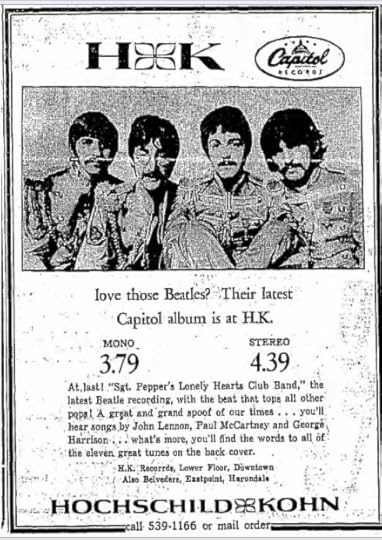
On June 1, 1967, the Beatles released what is widely considered to be their crowning achievement, "Sgt. Pepper's Lonely Hearts Club Band." Except, it turns out, June 1 isn't the day it came out.
In the UK, the album had actually dropped on May 26, rushed into stores perhaps because illegal copies were already circulating. Meanwhile, the album didn't officially come out in the United States until June 2 -- though some stores may have put in on their shelves early here, too.
Though Rolling Stone magazine ranks Sgt. Pepper as its #1 album of all-time, it's instructive to remember that it wasn't fully appreciated at the time of its release. The venerable New York Times called it an "album of special effects, dazzling but ultimately fraudulent." If you have a Times subscription, the whole review is worth reading, but other highlights include:
Like an over-attended child, "Sergeant Pepper" [spelled out, of course, this being the Times] is spoiled. It reeks of horns and harps, harmonica quartets, assorted animal noises and a 41-piece orchestra.
"Lucy in the Sky with Diamonds" is an engaging curio, but nothing more.
In substituting the studio conservatory for an audience, they have ceased being folk artists, and the change is what makes their new album a monologue.Other contemporary reviews were more positive, but it's also interesting to note that most came out in columns labelled "Teen Scene" or something similar, an indication that no one over the age of 20 really needed to pay attention to popular music. In those columns, while the album is praised, there a sense of resignation that there's nothing with a good beat for dancing.
However, two aspects of the album were seemingly universally praised: the innovation of removing a space between each song so that the whole album played like a suite; and the inclusion of printed lyrics on the album sleeve. Commonplace today, this was a first for pop music.
* * * *Read more about NYC history in
Footprints in New York: Tracing the Lives of Four Centuries of New Yorkers
Inside the Apple: A Streetwise History of New York City
Published on June 01, 2017 09:29
May 29, 2017
Decoration Day
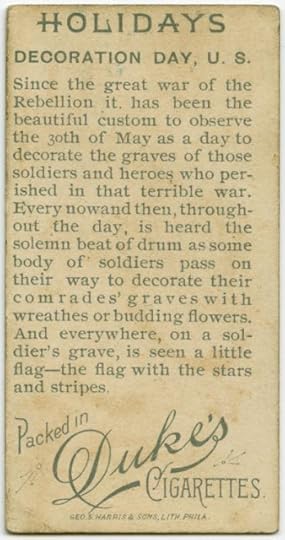
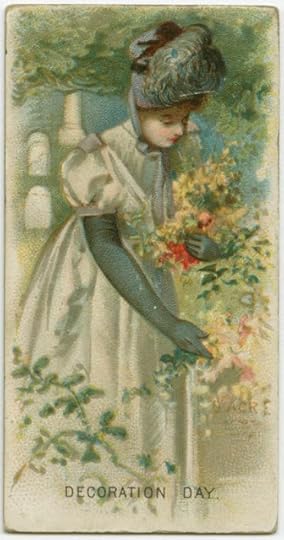
Before there were baseball trading cards, there were cards that came packed in cigarette packs and tins of tobacco. And before there was Memorial Day, we instead had a holiday called Decoration Day, which originated at the end of the Civil War. Originally, both veterans and civilians would go to the graves of fallen soldiers as well as to the statues of military heroes and decorate them with garlands of flowers.
Below, the statue of Abraham Lincoln in Union Square is honored on Decoration Day in 1876. Once the holiday transformed to Memorial Day, the practice of decorating statues fell into disuse, though the graves of fallen military personnel are generally spruced up this weekend.
* * *
SAVE THE DATE: we'll be hosting a public tour on Sunday, June 25, so save the date. Details coming soon!
Embed from Getty Images
* * * *Read more about NYC history in


Footprints in New York: Tracing the Lives of Four Centuries of New Yorkers
Inside the Apple: A Streetwise History of New York City
Published on May 29, 2017 13:38



